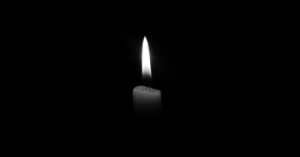Open-ended play activities are all about freedom, exploration, and creativity—especially powerful in early childhood settings where babies and toddlers are discovering the world through their senses and movement. Here’s a rich collection of examples tailored for babies (0–18 months), with variations to suit different developmental stages and settings.
What Are Open-Ended Resources for Babies?
Open-ended resources are materials that:
- Have no fixed purpose or outcome
- Encourage babies to explore, manipulate, and discover
- Support sensory, motor, and cognitive development
- Allow for repeated use in varied ways
Examples of Open-Ended Materials
Natural Materials
- Pinecones, feathers, leaves, bark, pebbles, shells
- Water play (pouring, splashing, floating)
- Ice cubes and frozen fruit slices for sensory contrast
Household & Repurposed Items
- Fabric scraps, scarves, ribbons
- Cardboard tubes, boxes, lids
- Wooden spoons, measuring cups, silicone muffin trays
Sensory Play Elements
- Play dough or edible dough
- Sensory bottles (water, glitter, beads)
- Treasure baskets with varied textures (metal, wood, fabric)
Loose Parts & Manipulatives
- Soft blocks, stacking cups, nesting bowls
- Puppet gloves and fidget blocks
- Recyclables like egg cartons, bottle caps, and sponges
Benefits of Open-Ended Play for Babies
- Builds cause-and-effect understanding
- Encourages fine motor skills and hand-eye coordination
- Supports language development through adult narration
- Fosters independent exploration and curiosity
Open-Ended Play Activities for Babies
Sensory Exploration
- Treasure baskets: Fill a low basket with safe, varied textures—wooden rings, silk scarves, metal spoons, loofahs, and rubber balls. Let babies explore at their own pace.
- Water play: Offer shallow trays with water, cups, sponges, and floating objects. Add citrus slices or herbs for scent exploration.
- Edible finger painting: Use yogurt, mashed fruit, or baby-safe purees on a tray or paper for tactile and visual stimulation.
Loose Parts Play
- Stacking and nesting: Provide cups, bowls, or boxes that can be stacked, nested, or filled.
- Fabric tunnels: Drape scarves or light blankets over furniture to create crawl-through spaces.
- Rolling and dropping: Use ramps (cardboard or wood) and balls or soft objects to explore gravity and motion.
Sound & Movement
- Shakers and rattles: Offer homemade shakers (sealed containers with rice, pasta, or bells) for auditory play.
- Dance scarves: Play gentle music and let babies wave or crawl through flowing scarves.
- Body percussion: Tap, clap, and pat with babies—on their bodies, yours, or soft surfaces.
Creative Expression
- Mirror play: Place a baby-safe mirror on the floor for self-recognition and facial exploration.
- Light and shadow: Use torches or natural light with translucent objects to explore shadows and color.
- Texture stamping: Dip textured objects (sponges, fabric, natural items) into edible paint or water for mark-making.
Everyday Object Play
- Kitchen discovery: Offer silicone muffin trays, wooden spoons, and measuring cups for filling, banging, and mouthing.
- Cloth play: Let babies pull scarves from a tissue box, wrap and unwrap soft toys, or crawl through fabric piles.
- Box play: Sit in, crawl through, or fill cardboard boxes—endless possibilities!
Why These Activities Matter
Each activity supports:
- Agency: Babies choose how to engage
- Sensory integration: Touch, sound, sight, and movement
- Motor development: Grasping, crawling, reaching, stacking
- Relational connection: Shared play with educators or caregivers
Open-ended play isn’t just an activity—it’s a philosophy that honors babies as capable, curious learners. By offering simple, versatile materials and trusting their instincts to explore, we create rich opportunities for connection, discovery, and joy. Whether it’s a treasure basket in a quiet corner or a splash of water on a sunny day, these moments lay the foundation for lifelong learning. Let’s keep nurturing wonder—one open-ended invitation at a time.
Further Reading
Open Ended Play Materials
Using Open Ended Questions with Children
Writing Observations For Babies
Achieving EYLF Outcome 1 In The Babies Room
Practical Examples Of Anecdotal Record Observation For Babies
Outdoor Activities For Babies and Toddlers
Self-Esteem Development From Babies To Preschoolers
A Curiosity Approach In The Babies Room
Loose Parts Materials For Babies, Toddlers and Preschoolers
Outdoor Play With Babies







 As an Educator in Australia, your pay rate falls under the Children’s Services Award 2010. This award states the minimum amount that an employer can
As an Educator in Australia, your pay rate falls under the Children’s Services Award 2010. This award states the minimum amount that an employer can When working as a qualified Early Childhood Teacher (with a university degree) within a service, your rate of pay will come from the Educational Services
When working as a qualified Early Childhood Teacher (with a university degree) within a service, your rate of pay will come from the Educational Services When working as a Diploma Qualified Educator your pay rate is from the Children's Services Award 2010. This Award states your minimum rate of pay
When working as a Diploma Qualified Educator your pay rate is from the Children's Services Award 2010. This Award states your minimum rate of pay When working as a Cert 3 Qualified Educator, your pay rate is from the Children's Services Award 2010. This Award states your minimum rate of
When working as a Cert 3 Qualified Educator, your pay rate is from the Children's Services Award 2010. This Award states your minimum rate of Educational Leaders play a crucial role in their early childhood service by ensuring that the educational program aligns with best practices and supports the holistic
Educational Leaders play a crucial role in their early childhood service by ensuring that the educational program aligns with best practices and supports the holistic In early childhood education and care, ratios are more than a technicality—they are a frontline safeguard. Every child deserves responsive supervision, emotional connection, and developmental
In early childhood education and care, ratios are more than a technicality—they are a frontline safeguard. Every child deserves responsive supervision, emotional connection, and developmental Here’s a comprehensive Mobile Phone and Smart Watch Policy tailored for early childhood education and care (ECEC) services in Australia, aligned with the latest 2025
Here’s a comprehensive Mobile Phone and Smart Watch Policy tailored for early childhood education and care (ECEC) services in Australia, aligned with the latest 2025 With the new national child safety reforms kicking in on 1 September 2025, early childhood services like yours have a real opportunity to lead the
With the new national child safety reforms kicking in on 1 September 2025, early childhood services like yours have a real opportunity to lead the The Sea of Fish Challenge is a national initiative that invites children, educators, families, and communities to create and display fish artworks as a symbol
The Sea of Fish Challenge is a national initiative that invites children, educators, families, and communities to create and display fish artworks as a symbol Across the early childhood education and care sector, educators are sounding the alarm: current staffing ratios are insufficient to deliver safe, meaningful, and developmentally appropriate
Across the early childhood education and care sector, educators are sounding the alarm: current staffing ratios are insufficient to deliver safe, meaningful, and developmentally appropriate


